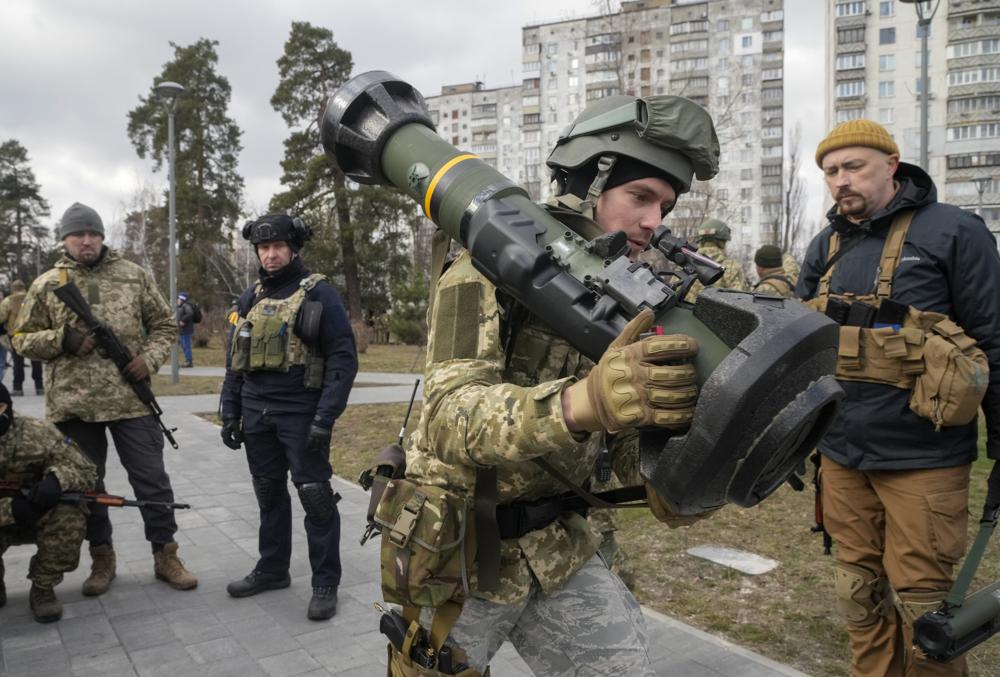
WASHINGTON — The signs are abundant of how Ukraine frustrated Vladimir Putin’s hopes for a swift victory and how Russia’s military proved far from ready for the fight.
A truck carrying Russian troops crashes, its doors blown open by a rocket-propelled grenade. Foreign-supplied drones target Russian command posts. Orthodox priests in trailing vestments parade Ukraine’s blue and yellow flag in defiance of their Russian captors in the occupied city of Berdyansk.
Russia has lost hundreds of tanks, many left charred or abandoned along the roads, and its death toll is on a pace to outstrip that of the country’s previous military campaigns in recent years.
Despite all the determination of Ukraine’s people, all the losses among Russia’s forces and all the errors of Kremlin leaders, there is no sign that the war will soon be over. Even if Putin fails to take control of his neighbor, he can keep up the punishing attacks on its cities and people. Ukraine’s president said Russia is trying to starve Ukraine’s cities into submission and that Putin is deliberately creating “a humanitarian catastrophe.”
“His instinct will be always to double down because he’s got himself into a dreadful mess, a huge strategic blunder,” said Michael Clarke, former head of the British-based Royal United Services Institute, a defense think tank.
“And I don’t think it’s in his character to try to retrieve that, except by carrying on, going forward,” he said.
Putin’s forces are waging Russia’s largest, most complex combined military campaign since taking Berlin in 1945. His . His initial objective, which he announced in a television address on Feb. 24 as the invasion began, was to “demilitarize” Ukraine and save its people from “neo-Nazis” — a false description of Ukraine’s government, which is led by a Jewish president.
At the start, Russians thought “they would install, you know, some pro-Russian government and call it a day and declare victory,” said Dmitry Gorenburg, a researcher on Russia’s security at the Virginia-based CNA think tank. “That was sort of Plan A, and as near as we can tell, they didn’t really have a Plan B.”
Russia’s first apparent plan — attack key Ukrainian military targets, and make a quick run to Kyiv, the capital — failed immediately. It was foiled by Ukraine’s defenses along with the countless mistakes and organizational failures by a Russian force that had been told it was only mobilized for military drills.
Clarke, the British researcher, related accounts of Russian troops selling communication equipment and fuel out of military vehicles to locals during the weeks they waited on Ukraine’s borders.
With no friendly population to welcome them, Russian forces reverted to tactics from their past offensives in Syria and Chechnya — dropping bombs and lobbing missiles into cities and town, sending millions of men, women and children fleeing.
Putin’s forces are in position to capture the besieged port city of Mariupol. Overall, Russians appear to be fighting with three objectives now: to surround Kyiv, to encircle spread-out Ukrainian fighters in the east and to break through to the major port city of Odessa in the west, said Michael Kofman, an expert on the Russian military and program director at CNA.
Kofman cautions that much of the information on the war is coming from Ukrainians or from their American or other allies. That makes the partial picture skewed and a full picture impossible.
A senior U.S. defense official on Friday said the Russians have launched more than 1,080 missiles since the start of the war and that they retain about 90% of the combat power they had arrayed around Ukraine at the beginning of the invasion.
The U.S. assesses that the airspace over Ukraine remains contested, the official said, speaking on condition of anonymity to discuss the military assessments. The Ukrainian air force is continuing to fly aircraft and employ air and missile defense
“Just look at the map, and you just look at how little progress the Russians have been able to make,” Pentagon spokesman John Kirby said recently.



